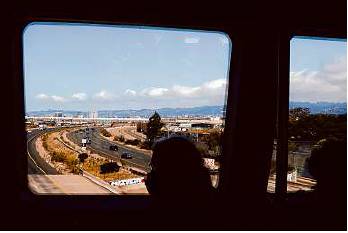How BART plans to trim its deficit
Early budget cuts overtime but won’t reduce service yet
By Ricardo Cano
BART has a plan to reduce its massive budget deficit.
The transit agency wants to restrict future overtime and redirect funds used to pay down its employee pension liability. The savings would make a small dent in BART’s $1.1 billion five-year deficit and buy the agency two more months before it hits its “fiscal cliff” in spring 2025.
The two-year preliminary budget, released Friday, combines cutbacks and budgetary gymnastics to decrease BART’s $143 million shortfall in 2025 by almost half, to $78 million. The agency’s total deficit through 2028 would shrink by $123 million, or 11 percent, under the latest proposal.
The regional rail agency’s preliminary budget for the upcoming two fiscal years does not include cuts that would reduce BART service — which has mostly returned to pre-pandemic levels.
In fact, officials said BART will not make any changes to current service levels until at least July 2025. The agency is projected to reach its “fiscal cliff” — the moment it runs out of $1.6 billion in federal pandemic aid — by March of that year.
The preliminary budget underscores the challenges that a fixed-rail system like BART faces in trying to cut costs without reducing transit service, such as the frequency and number of trains and rail lines that work throughout the Bay Area. Labor accounts for more than 70 percent of BART’s operating costs.
Bob Powers, BART’s general manager, wrote in the budget plan that while the spending cuts will “extend our fiscal runway,” the agency’s deficits “cannot be overcome with cuts alone.”
“They are simply too large,” Powers said. “To keep our region moving, we will continue our diligent work to secure a new and sustainable revenue source to fund operations.”
Restricting overtime is one of the main areas where BART aims to cut costs.
The agency’s operating budget includes an additional $4.4 million annually for overtime in 2024 and 2025, compared with 2023. But that spending would still be lower than what BART officials had previously projected and yield a savings of $16 million over two years.
The overtime curtailment will mostly impact police officers, operators and other frontline workers at BART. The agency has relied heavily in recent years on paying overtime to fill service gaps and vacancies in its police department.
“It’s a really important tool and it’s better, frankly, than sometimes hiring more people because overtime is cheaper at the end of the day,” BART budget director Chris Simi said. “But we’re trying to really manage how much of it we’re using and being a lot tighter on management controls with it.”
BART also plans to indefinitely suspend allocating money toward a trust fund it’s used since 2019 to save tens of millions of dollars to pay down its pension liabilities beyond what’s required.
BART’s board of directors needs to approve the suspension of those payments. If board members sign off, the move would save the agency $10 million per year at the expense of removing a tool for BART to rein in future growing pension costs.
Other cutbacks will yield smaller savings. BART plans to suspend employees’ travel to conferences and indefinitely suspend allocations for capital sustainability projects. The agency also wants to delay payments for capital projects further out, to reduce the immediate budget shortfall by $17 million.
Simi said the agency will continue to look for more ways to cut costs. And though officials are adamant they won’t cut BART service until at least the end of fiscal 2025, they still need to find $78 million to pay for operations that year.
BART leaders have been hesitant to scale back service, in part, because of fears that it would lead to fewer people taking BART, and less revenue for the transit agency that is highly dependent on fares to fill its operations budget.
While ridership remains about 60 percent below 2019 levels, San Francisco officials say robust BART service is necessary for downtown’s revival — even if the system never fully recovers its pre-COVID ridership.
BART and other transit agencies are lobbying for a state subsidy. It’s unclear whether state legislators will provide one in time for the agency to hold firm on its service plans.
“We’re in a really bad place right now, but what we know is it’s got to be some combination of cost-cutting and … new revenues,” Simi said.
Reach Ricardo Cano: ricardo.ca-no@sfchronicle.com; Twitter:
@ByRicardoCano

